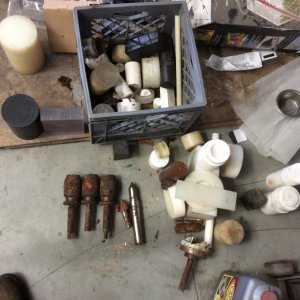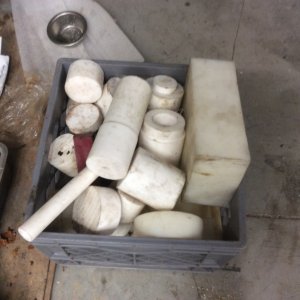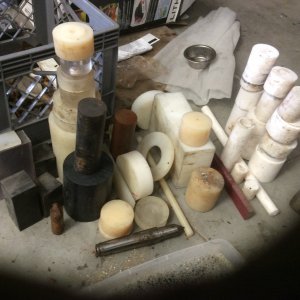- Joined
- Sep 27, 2014
- Messages
- 3,123
A guy I was getting stuff from "old Craig's list add "brought over a couple milk totes with bunches of plastic stock in them , also three rusty 1/2" Albright drill chucks (dam shame), "there in evaporust now" going to try making a good one , the insides look good but they are all locked up.
Anyhow is there a way to tell the different plastics apart, some are white white and heavier than the off white
Some are black , some are red, some clear, and a 1-1/4" thick 3'x4' clear lexan old bank window, heavy


His dad was a expert machinist and this stuff was his.
 He gave me this stuff , but I've bought several things from him in the past,
He gave me this stuff , but I've bought several things from him in the past,
Just wondering if there is a way to ID this material , and suggestions for use.
Thanks
Anyhow is there a way to tell the different plastics apart, some are white white and heavier than the off white
Some are black , some are red, some clear, and a 1-1/4" thick 3'x4' clear lexan old bank window, heavy


His dad was a expert machinist and this stuff was his.
 He gave me this stuff , but I've bought several things from him in the past,
He gave me this stuff , but I've bought several things from him in the past,Just wondering if there is a way to ID this material , and suggestions for use.
Thanks

